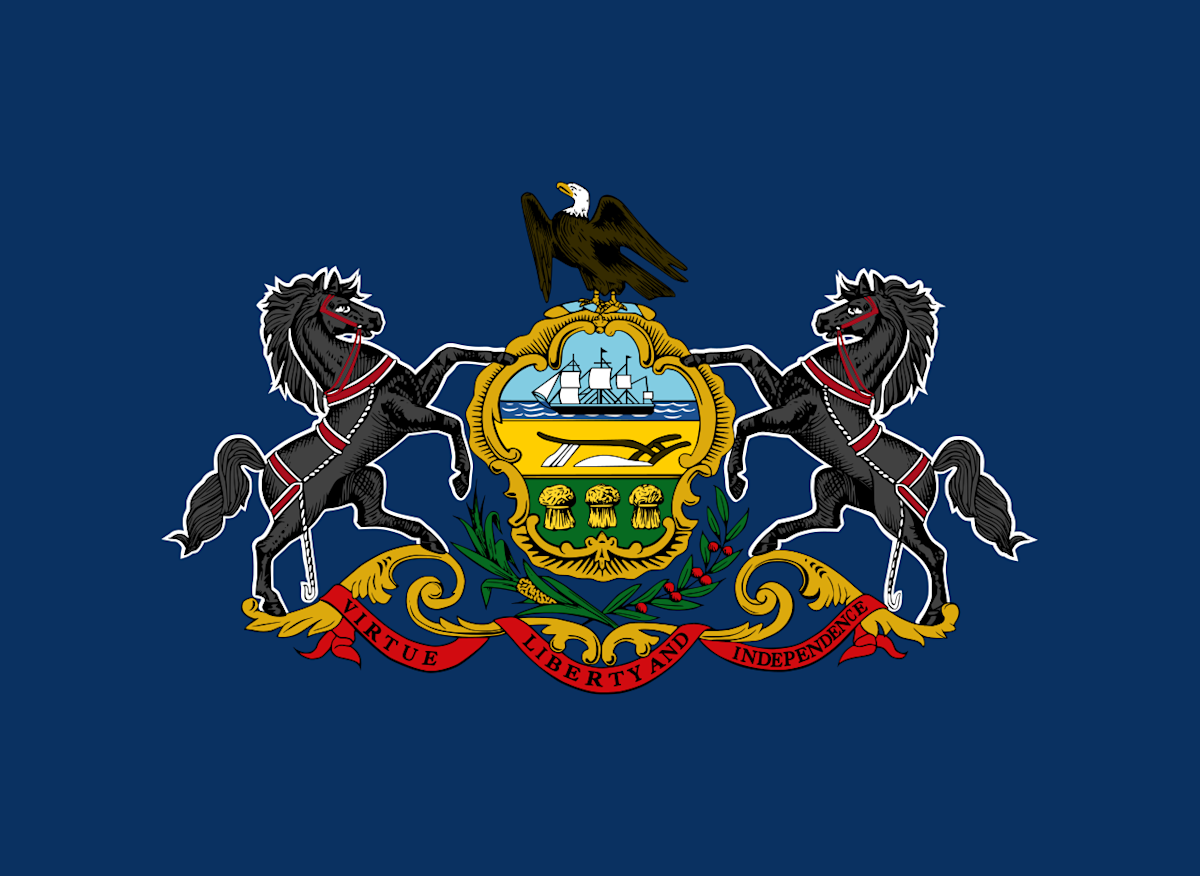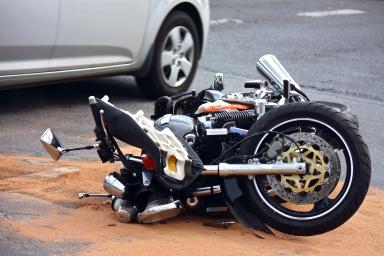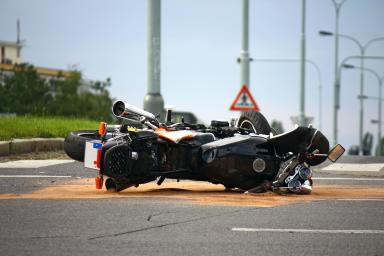Pennsylvania Motorcycle Laws

An analysis of the National Highway Traffic Safety Administration Fatality Analysis Reporting System data in 2021 by the National Safety Council found that motorcyclists accounted for 14% of all road deaths in the country, even though only 3% of all registered vehicles were motorcycles. Pennsylvania was among the six states with the highest number of motorcycle fatalities, with 222 lives lost that year.
Speeding, running red lights, and drunk driving are among the leading causes of motorcycle accidents. Failure to wear a helmet is a major risk factor for motorcycle riders. Based on accident data in recent years, some of the state's motorcycle crash hotspots are Saw Mill Run Boulevard, Ohio River Boulevard, Route 910, East Carson Street, and the connection of Fifth Avenue, Penn Avenue, and Washington Boulevard.
Pennsylvania lawmakers and officials have enacted rules and regulations, minimum insurance requirements, and personal injury liability guidelines to safeguard motorcycle operators, passengers, crash victims, and accident litigants. This article discusses pertinent information about the state's motorcycle laws.
Pennsylvania Motorcycle Helmet Law
State law requires motorcycle operators and riders under 21 to wear a helmet certified by the United States Department of Transportation. The legislation also states that a helmet must be worn by an individual with a motorcycle learner's permit, regardless of age. Riders 21 years old and older must also wear protective headgear unless they have two years of riding experience or have completed a Motorcycle Safety Foundation or PennDOT-approved safety course. According to the CDC, wearing a DOT-compliant helmet can dramatically lower the chance of suffering brain injuries in the event of a motorcycle accident. All riders must also wear protective eyewear, preferably shatter-proof eye protection, to protect their eyes from flying items such as wind, rocks, bugs, or anything else that may impair their ability to see while operating a motorcycle. On the other hand, wearing eye protection is not required if their helmet has a windscreen.
NHTSA and PennDOT data demonstrate that wearing a helmet saves lives. In 2020, 121 unhelmeted riders died on the roadways, while 106 motorbike fatalities occurred in 2021. These findings suggest that motorcyclists who wear helmets while riding have a better chance of surviving an accident.
In Pennsylvania, law enforcement may stop and ticket motorcycle riders who fail to wear helmets despite being required to do so. Those who violate the law may face a $25 fine.
Pennsylvania Motorcycle Licensing Law
Individuals who want to ride a motorcycle must first obtain a Class M license. To receive the license, individuals must first apply for a learner's permit, which enables them to ride only between sunrise and sunset and under the guidance and supervision of a Class M license holder. They must also complete basic motorcycle knowledge and on-cycle competence exams to demonstrate their understanding of traffic laws and safe driving practices. PennDOT's official website provides information about the license application procedure and answers to frequently asked questions.
The state's transportation department revealed that fully licensed riders are safer because they have the basic knowledge and abilities required to operate a motorcycle safely, unlike inexperienced riders. Motorcyclists caught driving without a license, regardless of whether they have a valid motorcycle license, will face a fine of up to $200.
Pennsylvania Lane Splitting Law
Lane splitting, or riding between lanes of slow-moving or stopped traffic, is prohibited in Pennsylvania because it puts motorcyclists and other road users in danger. When a motorcyclist splits lanes, they ride close to other vehicles. This increases the likelihood of a sideswipe collision, especially if the rider is in a driver's blind zone. They can also break a side mirror or damage a vehicle. Furthermore, there are times when automobile drivers cannot spot a motorcycle splitting the lane, increasing the chance of an accident if one of the cars shifts or swerves.
Pennsylvania Running a Red Light and Ride on Red Laws
Entering an intersection after the traffic signal has gone red is prohibited in Pennsylvania because it puts motorcycle riders, passengers, and other road users in danger. More than 800 lives were lost in the country in 2016 as a result of people carelessly choosing to run red lights. Citing traffic data from 2004 to 2016, the National Coalition for Safer Roads identified Philadelphia as one of the most dangerous cities for red-light running.
The "Ride on Red" law allows motorcycles, bicycles, and cars to advance with caution at an intersection if the vehicle-detection system of the traffic signal fails to recognize them. The Pennsylvania State Police and PennDOT noted that the signal must malfunction, be completely dark or frozen in red mode, or go through numerous cycles without giving you the green light before motorists can proceed. If a driver fails to check to see if any other cars are approaching the crossroads, they might be liable for the damages that result from an accident.
Pennsylvania Basic Speeding Laws and Absolute Speed Limits
According to the state's 2021 Crash Facts & Statistics report, speeding remains a major contributor to traffic accidents, with 25,958 related incidents recorded. Legislators have enacted basic laws and absolute speed limits to reduce road crashes. Under the basic state law, motorcyclists must always drive at a safe speed, especially if the current conditions are hazardous. It is also illegal to go faster than the following posted speed limits in designated areas:
If a motorcycle operator kills another person due to speeding, they will be charged with homicide-by-vehicle, which is punishable by up to seven years behind bars and a maximum fine of $15,000. Riders driving recklessly and causing accidents may also face a $200 fine, a six-month license suspension, and a 90-day jail sentence.
Pennsylvania Drunk Driving Law
Pennsylvania prohibits drivers from operating a motorcycle after consuming enough alcohol to render them incapable of riding safely. The legal limit in the state for blood alcohol content is 0.08%. DUI is classified into three levels: general impairment (0.08% to 0.099% BAC), high BAC (0.10% to 0.159% BAC), and extreme BAC (0.16% and more), with consequences ranging from heavy fines to license suspension and imprisonment. Meanwhile, riders under the age of 21 are governed by the Zero Tolerance Law. They may be punished for driving with a blood alcohol level of 0.02%.
Drinking and driving remains a top road safety issue in Pennsylvania. Data shows 206 motorcycle operators and passengers died due to drunk driving accidents in the state in 2020; 59 (28%) returned 0.08 BAC, while 32 (16%) returned 0.16 BAC. In 2021, alcohol-related crashes increased to 9,220 from 7,700 in 2020. A PennDOT report also revealed that motorcyclists had the largest percentage of drinking drivers among total drivers in 2021, recording 8.1% compared to passenger cars' 5.2%.
Pennsylvania Police Chase Law
In Pennsylvania, police departments are required to create and implement a policy defining the processes for initiating, continuing, and terminating a motor vehicle pursuit. When launching a chase, the department's decision-making criteria should include the following:
The risk of current or potential harm to others if the fleeing individual or individuals escape.
The gravity of the offense committed or suspected to have been committed by the individual or individuals fleeing.
Factors that endanger police officers, pedestrians, and other motorists.
Officers and individuals being chased are frequently injured during police chases, as are innocent bystanders and pedestrians. Police agencies might be sued if their irresponsible behavior contributes to injuries during a pursuit.
Pennsylvania Motorcycle Insurance Requirements
Individuals who drive a motorcycle on Pennsylvania's public roadways must have insurance. They are mandated to obtain bodily injury and property damage protection coverage on their policies. Bodily injury liability pays for the costs associated with injuries or fatalities sustained in an accident. Property damage liability covers damages to another person's property as a result of the crash. The following are the details of the state's minimum motorcycle insurance requirements:
$15,000 of bodily injury protection for injuries or death occurring to one person in an accident.
$30,000 of bodily injury protection for injuries or deaths occurring to more than one person in an accident.
$5,000 property damage protection for a single accident.
The state government enforces penalties for those who fail to maintain liability insurance on their registered motorcycle. If a rider is pulled over for a moving violation and PennDOT discovers that they are driving without insurance, they may be fined and have their driver's license and vehicle registration suspended.
There are other optional coverages that motorcyclists can add to their insurance policies. The table below shows some of them.
Pennsylvania Is a Choice No-Fault State for Insurance Claims
The state of Pennsylvania doesn’t have a no-fault or fault-based system. It allows motorcycle owners and riders to decide whether to purchase no-fault insurance (limited tort insurance coverage) or fault-based insurance (full tort insurance coverage). Under the limited tort coverage, policyholders can still recover all out-of-pocket medical costs and other losses. However, they can't recover payments for pain and suffering unless they sustain "serious" injuries. With a full tort coverage option, the policyholder retains unrestricted rights to lodge a lawsuit against the negligent party. They are also entitled to unlimited rights when getting financial compensation from the at-fault party.
How Much Can Someone Sue for a Motorcycle Accident in Pennsylvania
Motorcycle crash victims in Pennsylvania can seek compensation for economic and non-economic damages. Economic damages cover past and future medical bills and lost earnings, as well as property repair or replacement expenses. Non-economic damages, on the other hand, are general damages that cannot be computed. These include pain and suffering, loss of consortium, loss of enjoyment of life, and mental distress.
There is no fixed settlement amount that a plaintiff can recover. Every personal injury claim is evaluated based on several factors, including the severity of the injuries and the certainty of who caused the incident in question.
It is also important for plaintiffs to note that a $500,000 damages cap is in place for cases filed against local government entities in Pennsylvania. To ensure they maximize the compensation they are entitled to, they must seek guidance from personal injury lawyers on the best course of action.
Pennsylvania Is a Modified Comparative Fault State for Motorcycle Accident Lawsuits
Pennsylvania enforces a "modified comparative fault" rule when it comes to lawsuits stemming from motorcycle accidents. This means that the compensation available to a plaintiff depends on their share of fault for the accident. Each party's total percentage of blame and the dollar amount of the plaintiff's losses are calculated based on the available evidence. For example, if a jury or judge concludes that the victim should receive $120,000 in total damages but is also determined to be 40% at fault, the plaintiff will only receive 60% of the amount, or $72,000. Furthermore, if victims are found to be more than 50% at fault for the crash, they will not be compensated.
Pennsylvania Statute of Limitations for Motorcycle Accidents
State law indicates that motorcycle accident victims must file a lawsuit within two years of the accident, whether based on physical injuries or property damage due to the negligence of others. Family members of those who died due to the motorcycle crash must also initiate a wrongful death claim against the negligent driver within two years from the date of death. If they fail to bring a lawsuit within the deadline, a victim's claim will likely be dismissed, thus preventing the plaintiff from recovering damages. However, the law does have exceptions. Among them is that minors can only sue the defendant for up to two years after they turn 18.
Legal Resources for Pennsylvania Motorcycle Accident Victims
Pennsylvania Bar Association Lawyer Referral Service
Through its lawyer referral service, the state's bar association assists individuals in finding the right lawyer for their issue or case. The process starts by filling out the online form, which is accessible 24/7, with an explanation of the legal issue. The applicant will be referred to an attorney suited to handle their case. They will then contact the lawyer for an initial 30-minute consultation, which will cost no more than $30. Citizens may also access the state's local bar lawyer referral services list.
Pennsylvania Bar Association Pro Bono Program
This free legal aid service aims to help underprivileged citizens who have been in a motorcycle accident and need legal assistance. Those who seek legal professionals should fill out the PBA Pro Bono Program Legal Assistance Request Form. They can also look at the County Pro Bono Map for additional information about the volunteer lawyer activities in their area. Individuals seeking free legal advice may also contact the Pennsylvania Legal Aid Network.
Commonwealth of Pennsylvania Driver's Accident Report
If law enforcement did not investigate a traffic accident or if there was injury, death, or property damage, involved drivers and riders must file a Driver's Accident Report (AA-600) form with the Pennsylvania Department of Transportation within five days of the collision. The report's objective is to collect data that can be used to develop strategies for accident prevention and reduction. The AA-600 form also contains general guidelines for filling out the request.
Online Crash Report Requests
Motorcycle crash victims or their authorized representatives can locate and obtain digital copies of their crash records on the Pennsylvania State Police's Online Crash Report Requests website. Those requesting a report are advised to wait 15 days from the date of the incident before searching for one. When applying for a copy of the crash report, they can search by the incident number located on the top-left of the page of the paper copy of their police crash report. They can also search for results without a paper copy by entering a name and a date. Reports can be purchased after locating them using a valid credit or debit card.
Financial Responsibility Questions and Answers
PennDOT Driver & Vehicle Services answers some of the most frequently asked questions about the state's financial responsibility or insurance requirements. Motorcycle owners planning to cancel their liability insurance because they only use their motorcycle in the summer can find more information by downloading the Seasonal Requirements Registration Fact Sheet.
Pennsylvania Motorcycle Operator's Manual
PennDOT published a motorcycle rider's guide that offers the information they need to earn a motorcycle license and avoid traffic accidents while riding a motorcycle safely. This manual will also teach motorcycle riders how to avoid collisions.
Expertise.com StaffAuthor
Step into the world of Expertise.com, your go-to hub for credible insights. We don't take accuracy lightly around here. Our squad of expert reviewers, each a maestro in their field, has given the green light to every single article you'll find. From rigorous fact-checking to meticulous evaluations of service providers, we've got it all covered. So feel free to dive in and explore. The information you'll uncover has been stamped with the seal of approval by our top-notch experts.


![¿Cuál es la indemnización promedio de las demandas por accidentes de moto? [2023]](https://images.ctfassets.net/k00sbju4hbzq/590XSDSoqNVs6XSMNY5s3G/a969ee3bedaaf9016cec601fc30f495b/average_motorcycle_accident_settlement.jpg?fit=fill&w=384&q=75)

